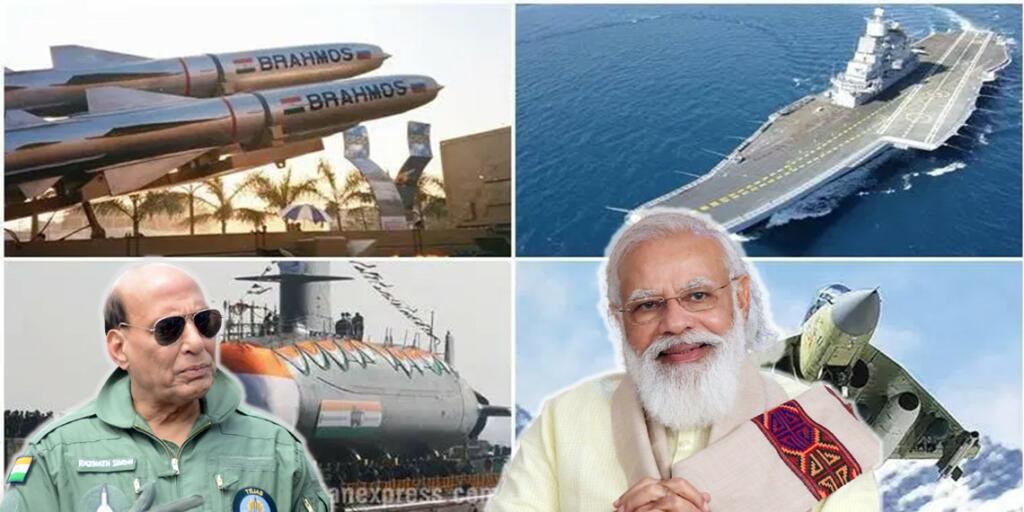According to the Stockholm International Peace Research Institute (SIPRI), India, with 11% of global imports, is the largest arms importer in the world. In its effort to modernize the arm forces of the country, India, in recent times, has made a lot of big-ticket purchases of military hardware like Apache attack helicopters, Rafale fighter jets, S-400 air defense systems, and other state-of-the-art technologically advanced weapons systems. In the financial year 2022-23, out of 5.25 lakh crore of the defence budget, a total of 1.52 lakh crore has been allotted to buy new arms, fighter jets, warships, and other military equipment. Most of these buyouts are to be imported from other countries on an emergency basis.
Increasing Defence Export
On one hand, the government is focusing on the modernization of the armed forces on a priority basis through fast track acquisitions and on the other, is making transformative changes in policy initiatives to increase the domestic defence industry. Under the Atmanirbhar and Make in India initiatives, the government had set the target for annual defence export of Rs 35000 crore by 2025. Aligned with policy initiatives, India has made a significant jump in defence exports.
According to the Ministry of Defence report, India’s defence exports for 2021-22 were Rs 13000 crore and the biggest buyer of Indian Defence goods was the United States of America. Sanjay Jaju, Additional Secretary, Department of Defence Production, in a press brief said that in 2021-22, we have recorded Rs 13000 crore of export which is the highest ever export number that we have recorded in defence.”
He further added that the share of public sector companies in India’s defence exports has increased to 30% from earlier 10% and the private sector accounted for 70% of the exports.
Read More: India takes a giant step as a defence manufacturer with its Tejas deal with Egypt
Defense Export Policy Reform
The overwhelming increase in defence exports is attributed to the government’s targeted and structural policy initiatives in recent years. After the second term in office, the Modi government brought a detailed ‘Defence Production and Export Promotion Policy’ in 2020 to make the nation self-reliant in defence production. It envisaged to achieve a turnover of ₹1,75,000 crore including export of ₹ 35,000 crore in Aerospace and Defence goods by 2025.
To develop the domestic defence industry, the policy has adopted various focused and structured initiatives like procurement reforms, support to startups and MSMEs, optimizing resource allocation, and promotion of foreign direct investment. Further, to enhance the foreign investment in the country, the FDI limit in the Defence Sector has been increased to 74% through the automatic route and up to 100% through the government route.
Moreover, two Defence Industrial Corridors, one in Uttar Pradesh and another in Tamil Nadu, are being set up in India to catalyze the indigenous manufacturing line and enhance export.
To expedite the export process, countries are recognized to focus on the production of required defence equipment. The countries on priority lists are Vietnam, Malaysia, Indonesia, the Philippines, Saudi Arabia, UAE, the US, Egypt, and other African countries.
Further, the offset deal of India’s defence purchases is being aligned to support the domestic defence manufacturing industries. For example, under the Apaches and Chinook purchases, Boeing and Tata are exporting all fuselages of Apaches helicopters all over the world from India. And, following the Rafale offset deal, French aviation giant Safran has targeted to invest around $150 million in India. These offset plans have not only contributed to bringing back the buyout money but have also made it compulsory for partnering companies to transfer the technologies to India.
Moreover, the recent talks to export made-in-India Tejas Light Combat Aircraft fighter jets to Malaysia and Egypt and BrahMos supersonic cruise missiles to Vietnam and the Philippines will help in realizing the targeted goal of defence export to Rs 35000 crore by 2025.
Read More: Malaysia wants India’s Tejas LCA at any cost
In the geopolitical overhaul and realignment of world order, India deserves the center stage. Until and unless the country’s export base is not enhanced, India will not be able to leverage its policies around the world. As the conflict is going to rise in near future, India must be Atmanirbhar in supporting its defence requirements and become the net exporter of defence equipment from the net importer.
Support TFI:
Support us to strengthen the ‘Right’ ideology of cultural nationalism by purchasing the best quality garments from TFI-STORE.COM
